#arawa
Explore tagged Tumblr posts
Text
The biggest crime Satine Kryze is guilty of is being animated with fair skin and blonde hair.
#satine kryze#duchess satine#temuera morrison like “why am i catching strays in this?”#criticizing mandalorians is a perfectly valid thing to do#because they're a fictional people#equating mandalorians to a real culture is dangerous#because the whole point of media like SW#is to dissect it#tem is māori and te arawa and tainui as well as scottish and irish#that doesn't mean mandalorians are too#but if they were#satine's white ass would be perfectly fine cause irish and scottish#if that's the argument we're making *shrugs*#but f'real i wish i could go back and tell the animators#make her purple with polka dots just don't make her white#cause we're gonna be seeing this commentary until the end of time#bad takes in the satine kryze tag again
24 notes
·
View notes
Text
youtube
Sodeno Arawa - luv drama (ft. Hatsune Miku, Yuzuki Yukari, Yuzuki Yukari Shizuku)
Genre: Funk, Poemloid
Release Year: 2023
#vocal synth#vocaloid#yuzuki yukari#vb type: vocaloid#vb type: a.i.voice#other vb: hatsune miku#producer: Sodeno Arawa#genre: RnB#genre: poemloid#song type: original#daily yuzuki yukari songs
5 notes
·
View notes
Text






Day 7 @tolkienofcolourweek: Elwing
Part 25 of toi's indigenous tolkien series
Faceclaim is Moriori and Māori. For Moriori albatross feathers are sacred symbols of peace
[image description
1: white waterfall, text in a circle 'she was born on a night of stars, whose light glittered in the spray of the waterfall of Lanthir Lamath beside her father's house'
2: blue moriori tree symbols, stars, text 'Elwing' and 'Princess of Doriath Lady of Sirion'
3: birds flying, text 'Elwing learned the tongues of birds, who herself had once worn their shape; and they taught her the craft of flight, and her wings were of white and silver-grey.'
4: a young woman with albatross feathers around her, text in a circle 'he gave her the likeness of a great white bird, and upon her breast there shone as a star the Silmaril'
5: lighthouse with bright light, text in a circle ' Therefore there was built for her a white tower northward upon the borders of the Sundering Seas; and thither at times all the sea-birds of the earth repaired'
6: big waves at sea, text 'As a white cloud exceeding swift beneath the moon, as a star over the sea moving in strange course, a pale flame on wings of storm.' and 'shining, rose-stained in the sunset, as she soared in joy to greet the coming of Vingilot to haven.']
#elwing#silmarillion#tolkien women of colour#pacific tolkien#maori tolkien#moodboards and edits#toi's indigenous tolkien series#toi's creations#tocweek2023#rāhiri mākuini edwards-hammond - moriori / ngāti kahungunu o te wairoa / ngā uri taniwha o hine kōrako / ngāti ruapani / rongowhakaata /#taranaki whānui / te arawa
29 notes
·
View notes
Text
Unpoison / 初音ミク
9 notes
·
View notes
Text
i hate when songs are high like i cant do that, and then i sing them anyway and fail because i am unbothered to transpose and have a shitty instrumental
9 notes
·
View notes
Text
once again thinking about the way nagisa moans in melting rouge soul. against my will i am thinking of it
#sir......... please#the fact that it's on the word arawa too... SIR.#every single goddamn time his voice breaks im like 🤪🤪🤪🤪🤪#vv.txt
3 notes
·
View notes
Text
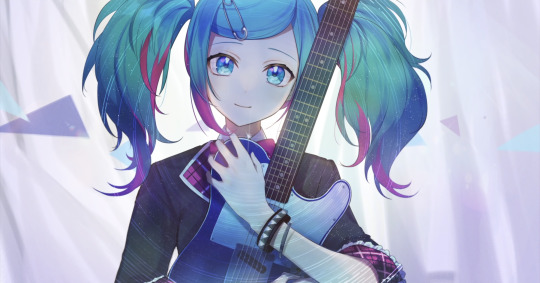
Characters from Project SEKAI have occasionally been featured in the Vocaloid MVs for commissioned songs. The first instance of this happening was School SEKAI Miku appearing in DECO*27's MV for needLe.
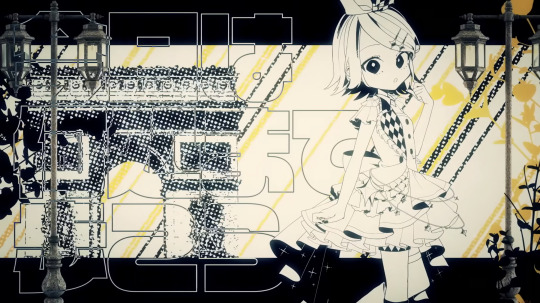
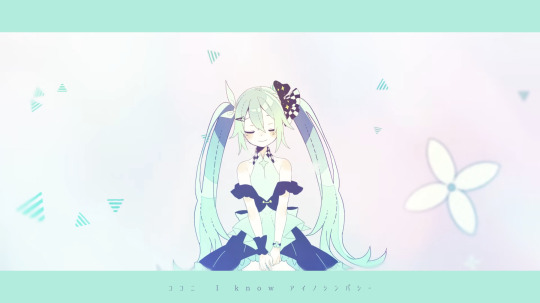

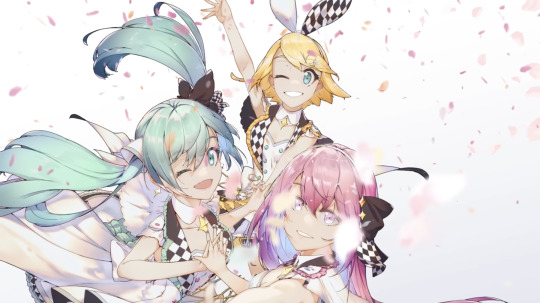
The Stage SEKAI Virtual Singers appear most frequently in producer's MVs, with Miku appearing in Color of Drops, Ai no Material, and MORE! JUMP! MORE!, Rin in Tenshi no Clover, and the two of them together with Luka in DREAM PLACE.
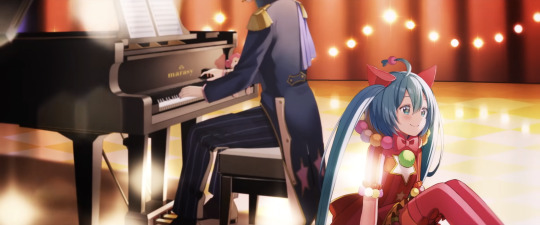
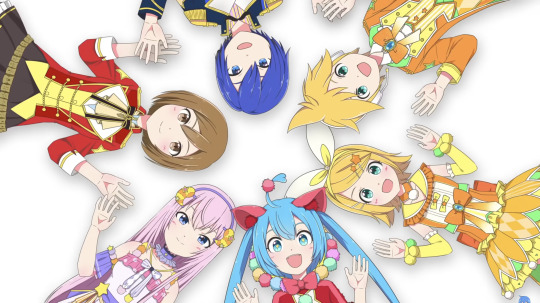
The Wonderland SEKAI Virtual Singers have appeared in two Vocaloid MVs, with Miku and KAITO appearing in 88☆彡, and all six of them appearing in Glory Steady Go!.
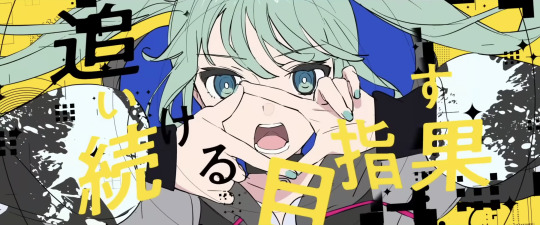
Street SEKAI Miku appears in Yunosuke's MV for Awake Now.
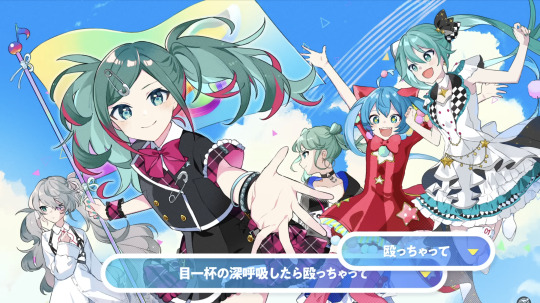
An Empty SEKAI Virtual Singer has only appeared in one MV, that being Miku in DECO*27's Journey MV. This MV also featured all the other Mikus.
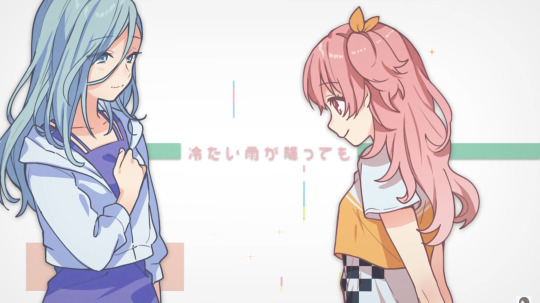
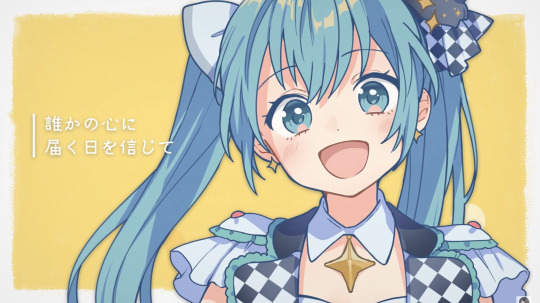
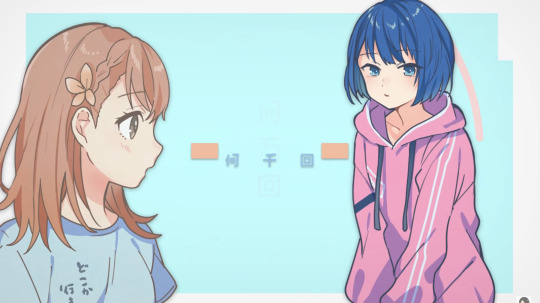
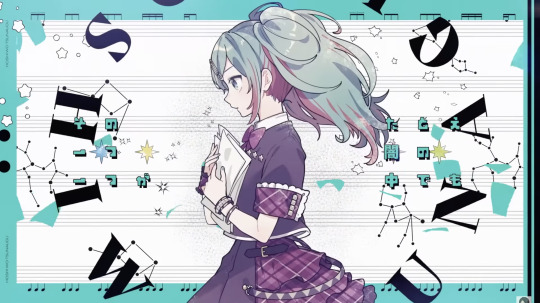
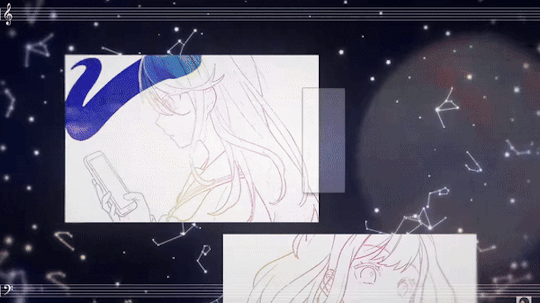
40mP is a rather notable producer here, since in his MVs for his two commissions, Color of Drops and Hoshi o Tsunagu (the latter in collaboration with Hifumi), he has not only featured Mikus from the game, but main characters too. MORE MORE JUMP! and Miku appear in Color of Drops, and Leo/need and Miku feature in Hoshi o Tsunagu.
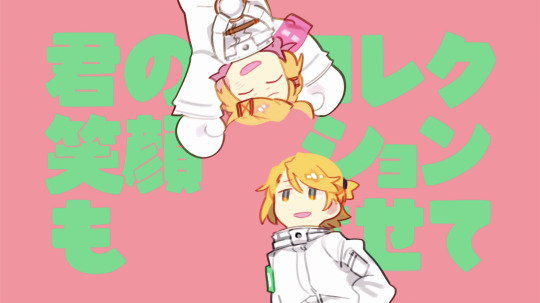

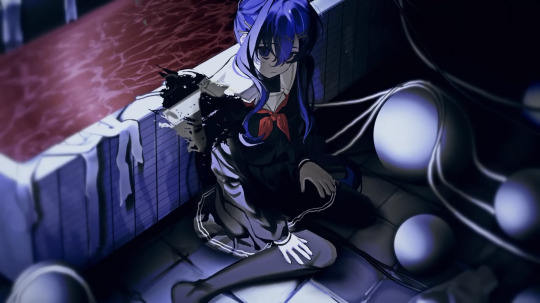
While not the actual characters themselves, the designs of the Rins and Lens in WONDERFUL☆OPPORTUNITY!'s MV for Niccori^^Chousa-tai no Theme are based on the members of WonderlandsxShowtime, and the character in Sodeno Arawa's Unpoison MV is heavily based on Mafuyu.
#the girl in unpoison might actually be mafuyu but she looks different enough to pass as a different character#project sekai#2dmv
322 notes
·
View notes
Text
Just been researching about Tom and John Hartnell and now I’m sad
On 24th December 1837, Tom joined HMS Volage. He spent 4 years on that ship (and presumably participated in the Battle of Chuenpi (1839) in the First Opium War. Tom returned to England and was paid off on 20th May 1841
Tom then signed onto HMS Tortoise on 24th May 1841 (yes, 4 days later) and spent 2 and a half years on that ship. It’s also possible that he was one of the men chosen to participate in a conflict between the Te Arawa tribe and Major Thomas Bunbury (commandant of a convict settlement at Norfolk Island, Australia) but it’s not known for certain
When he returned to England in the winter of 1843, it was to find that John had been on HMS Volage since September 1841. Tom didn’t join another Navy ship until 1845 (presumably to help his widowed mother look after his 3 younger siblings)
John returned to England and was paid off on 1st February 1845 and him and Tom had just over 3 months on land together before they set off on the Franklin expedition
They set sail on 19th May 1845 and had less than a year together before John died on 4th January 1846
From what I can work out, they saw each other for roughly 11 months, 1 week and 1 day in the space of 8 years
Excuse me while I go cry
#what better thing to do on a friday evening than make yourself sad about the hartnell brothers?#just something to cheer you up a bit after that#tartnell had freckles#and he had his initials tattooed on his right arm#franklin expedition#thomas hartnell#john hartnell#tartnell#jartnell#amc the terror#the terror#not really but it’s terror adjacent
38 notes
·
View notes
Text
vocaloid 2023
my whole youtube playlist, including numerous songs not listed, can be found here!
as per tradition, here are some of my personal fav songs from 2023 :-) standouts are definitely kyoufuu all back girl by yukopi & hito mania by sasuke haraguchi, not sure if i've seen any other vocaloid songs reach these levels of virality as instantaneously since goodbye sengen!
listing has my favorites towards the top (but the ranking isnt that strict), bolded are my super favorites, & some extra ramblings will be appended at the very end. smiles
2023 standouts :-)
first, my no. 1 top song:
none other than the viral & wonderfully bizarre hito mania by sasuke haraguchi :-) !! its not often that a song as popular as this takes my number one slot! haraguchi has this talent for making sounds that should not ever be used in a song just... work. its so ridiculously catchy that i havent tired of it at all, even with the truly Massive influx of covers/remixes/mads/memes made since. its charm is precisely in just how eccentric, bizzare, and most importantly new it is. its something really fresh to the scene & im looking forward to more of haraguchi's vocalsynth stuff in the future!!
and with that stated, on with the listing!
the awesomeness begins
here are some of my favorite songs out of the more mainstream, or rather more-likely-to-be-recognized, bunch:
(x) | akotoba by sasuke haraguchi ft. miku
i have a dedicated bullet point describing my love for this song at the very bottom of this post LOL
(x) | babel by iyowa ft. teto
(x) | unpoison by sodeno arawa ft. miku
probably the most potent earworm on this list to me
(x) | actress by iyowa ft. hanakuma chifuyu
(x) | anta ni akkanbe by hifumi ft. miku
(x) | shinjinrui by marasy, jin, and kemu ft. rin
(x) | for dear life by niru kajitsu ft. flower
(x) | neruna spooky by picdo ft. adachi rei
(x) | fantasia by sasakure.uk & uk rampage ft. miku
(x) | girl a remix by nekobolo ft. rin
(x) | od by akagami de wa nai ft. kaai yuki & miku
why are you only a minute long stop doing that to your songs you are killing them...
(x) | √ (roots) by minato ft. xingchen
(x) | bouquet garni by niru kajitsu ft. flower
(x) | the exit 8 by eo ft. rin
(x) | a mysterious call by r-906 ft. rose & popy
(x) | tiny me by masarada ft. teto
(x) | voidroid by r-906 ft. haru, miku, & una
(x) | warning time by youman ft. gumi <- tuninggg
(x) | x.e.n.o by sasakure.uk ft. miku & kaito
(x) | hoiyoho by yukuewat ft. kochie, anna nyui, and mine laru
(x) | (not) a devil by deco & pino-p ft. miku
(x) | do not solve me by frog96 ft. rime
(x) | a drowned body wants to be lovey-dovey by lonepi ft. miku
(x) | passing gazes, overlapping words by frog96 ft. teto
(x) | chilly by yomitan akane ft. teto
(x) | idiotic communication by isonosuke ft. chis-a
this song is like hito mania's beautiful estranged cousin or perhaps sibling to me
(x) | rarehen wa by wanopo ft. rin & len
(x) | self proclaimed angel by kat ft. tsurumaki maki
(x) | ime-chan wants to become a guitar hero by ime44 ft. yuki
(x) | denki youho by inabakumori ft. miku
(x) | honto no by sasuke haraguchi ft. teto
kind of a genius response song to hito mania's immense popularity imo
(x) | frog phenomenon by adeliae ft. kaai yuki
(x) | hito mania remix by camelots ft. teto
you know the remix is good when they sample crazy frog
hidden gem/underrated section
now thisss. is where the really good stuff is hiding.
note: this may include songs that are decently popular but whose producers are less so; or the inverse i.e. producers who are popular but with overlooked songs (meaning this is very subjective!)
(x) | A⇌あ⇌A by subesakuhin ft. mine laru
an english original subeana styled song! geuninely so obsessed with these lyrics
(x) | chef's kimagure rock by inuha ft. miku
(x) | hanashi kawaru kedo by inuha ft. miku
inuha has such a charming way of playing with tempo in their songs; this one in particular has very surprisingly sweet lyrics
(x) | lethe by aliey:s ft. miku
(x) | tapir by saeki tatsuki ft. miku
ohhhh. ohhhh. i will cry. i will
(x) | sunk cost by aliey:s ft. flower
(x) | keep your headaches by ryo iogi ft. teto
(x) | potentially avant-garde girl by yumameane ft. teto
(x) | nothingness by liru jinzhi ft. kaai yuki & shian
(x) | my speakers broke by asanuko ft otomachi una, len, & miku
song of the summer
(x) | lies and the future by uwabe ft. adachi rei
(x) | 奴隷 by atokata ft. nene nene
(x) | dance hall end by aruseika ft. miku
all-in-one talent alert (musician, artist, animator) aruseika also has a making-of video detailing how they both composed & animated the song!!
(x) | goodnight cold sleeper by ro2noki ft. adachi rei
(x) | デバフ脳 by last 4 cigarettes ft. tsukuyomi-chan
(x) | pained. by minamo minato ft. yamine renri
(x) | hymn to the decadent life by ro2noki ft. teto
(x) | tentacle by midluster ft. kaai yuki
(x) | edo disco by yumameane ft. teto
(x) | 焦燥 by kinoue64 ft. miku
(x) | tenshi dattandayo by ft. ǢǪ ft. miku & xingchen
(x) | rot away by lvnarlii ft. teto
(x) | ▀ by 全ては裏で動く。ft. defoko
(x) | counting sheep by saeki tatsuki ft. miku
watch this for the mv! its a loop of an animation that lasts only a few seconds, but its both beautiful & incredibly impressive being that its hand drawn
(x) | 頼リタイアガール by midluster ft. kanade kanon
(x) | repeated poems by 全て私達の所為にするな。
(x) | final end roll by kinoue64 ft. miku
(x) | eyesight love by xaneiro ft. flower
(x) | migiwa rinshou by nakase miru ft. rime
(x) | ⋆ by ueil ft. miku
(x) | 墓場 by den9 ft. teto
(x) | -_- by egao ft. defoko
i did not know their name is egao thats funny as hell
(x) | 潜 by 全て画質の所為です。ft. defoko
(x) | いはないお約束 by xaneiro ft. flower
warning for intense glitching/flashing throughout this mv!
rambling section
beautiful year for adachi rei & teto enjoyers in my opinion... tetos synthv release really caused such a huge uptick in teto originals & rei is still riding off of that heat abnormal high lol its been wonderful to witness
i promise you i'm surprised only one project voltage song made the list too! i guess i really only enjoyed inabakumori's song. jin's song is in here in spirit too (trans miku + eevee... perfection) but ultimately i'm not the hugest fan of the song itself (it is sooo cute though)
so many songs under two minutes long So so so sad this isn't healthy for them. you have to stop. this is a phenomenon happening across music in general and not specific to vocaloid whatsoever but i think its funniest to blame this on surii
quite a few xx/subeana styled songs made the list this year just bc i got really into exploring the genre!! and my youtube recommendations helped out a lot lol. keeping in true spirit with the genre though a number of them have since been unlisted
i included kyoufuu all back in the introductory paragraph but excluded it from my actual listing and this was not a mistake. i have sadly grown somewhat sick of it. such is the way with immense popularity... it really is a cute song but oh my god is yukopi getting so much damn mileage out of it
iyowa really knocked it out of the ballpark earlier this year with babel & actress those are both soooo so so good. actress in of itself is just a really well executed narrative whereas babel is such a clever song celebrating teto's synthv release (it being a duet between her synthv & utau banks, her drills quite literally as an inverted tower of babel, babel because her synthv bank allows her to sing in multiple languages... a slight copycat of a cynosure madonna!!!)
but mannn synthv releasing Both teto & gumi banks this year, not to mention the kafu announcement??? insane. its like a vocalsynth monopoly up in here
RAMBLING SECTION SOLELY FOR AKOTOBA: what a lovely lovely lovely song. part of its charm for me is the fact that, being a haraguchi song, you go into it expecting it to veer wildly off course or incorporate some sort of bizzare musical twist; but the twist is that there is no twist! its instead just this really pure & beautiful build up to a vibrant & joyful chorus, no tricks. its so celebratory sounding!! & i find it charming how its still obviously a haraguchi song, complete with his signature strangeness (the scream sfx), but tempered into something sooo sweet. the proseka note haraguchi wrote for the song too really melts my heart; i know it was meant to be somewhat humorous but i find something so so so beautiful in the concept of a song made for the first time in a world where music has all but virtually disappeared... im glad that miku + teto + haraguchi are all still alive and well in the year 3023 lol. genius move to have the title be a play on ai kotoba too. genuinely cannot help but break into a wide smile whenever i listen to this song
now with all my praise for haraguchi out of the way, my actual favorite producer of this year has to be.... yukuewat! i found them beginning of january and have been in love ever since. my favorite songs of theirs weren't released in 2023, so they make scant appearances on this list, but they were one of the producers i listened to the most this past year! their tuning is perfection to me, i feel like they occupy this really intrinsic-to-vocalsynth niche where their tuning is both robotic AND emotional; having all the harsh consonants and precisce diction you can only get from a vocalsynth but arrested with emotions that feel organic, despite sounding distinctly nonhuman. that is what vocalsynth is all about to me!!! not to mention their style is both addictively catchy & unique, i don't think i can name another musician off the top of my head who makes music like they do. theyre a huge huge favorite of mine, and with their gradually rising popularity, i hope more ppl come to recognize them soon!!!
and with all that said too, apparently according to youtube music my top artist for 2023 was not yukuewat but asanuko!!! i guess i listened to the speaker song more than i realized lol
if you read all of this i love you with my entire heart
28 notes
·
View notes
Text
OPINION: The national hui at Tūrangawaewae Marae saw 10,000 people united in the face of actions by the coalition government, including its proposed Treaty Principles Bill. John Campbell was there.
History happens on single days.
Yesterday, at Tūrangawaewae, will be one of them.
“Why are you here?”, I asked Tame Iti.
“Vibrations”, he replied.
The rest of us will feel them over the days and months and years ahead.
Initial estimates of how many people would come had begun at 3000. Then 4000 registered, so estimates grew to 5000. Then 7000. By lunchtime, organisers were saying 10,000 had arrived. There wasn't room inside for them all. A large marquee across the road was full, all day. Every seat, everywhere, was taken. There was hardly standing room.
This special place, which has held tangi for royalty, which is where the Tainui treaty settlement was signed, which was visited by Nelson Mandela, and Queen Elizabeth II, and many of our greatest rangatira, has seldom seen so many people.
But no one objected. To standing. To the steaming heat. To the fact that sometimes people were too far away from the speakers, or the screens relaying them, to hear.
New Zealand First’s deputy leader, Shane Jones, told RNZ the hui could turn into a “monumental moan session”.
But it didn’t. Somehow, the word I keep coming back to is joyful.
The National Hui for Unity it was called. And it felt like exactly that.
On the way to Ngāruawāhia early yesterday morning, I pulled into a truck-stop near Bombay, at the southernmost end of the Auckland motorway system, to meet the Ngāpuhi convoy travelling down from the far north.
Some had begun their journey way up, in Kaikohe, at 3am. They spilled out into the half light of an overcast morning and inhaled the beginning of what would be an extraordinary day.
It’s easy for the significance of this delegation to be lost amid all the other arrivals. The people who’d come from even further away. Iwi after iwi. Ngāpuhi, Ngāti Porou, Tainui, Ngāti Kahungunu, Ngāi Tahu, Te Arawa, Ngāti Tūwharetoa, Ngāi Tūhoe, Ngāti Maniapoto – the big ten, all there, in declaratory numbers.
Just a few members of the Ngati Porou contingent who drove over on Friday from Tairāwhiti to attend the hui.
Ngāi Tahu representatives had taken a huge journey by road, then Cook Strait ferry, then road.
A friend’s father flew up from Invercargill.
But the size and standing of Ngāpuhi’s delegation provides some insight into how very significant this hui was.
Ngāpuhi aren’t a Kīngitanga iwi. They don’t see Kīngi Tūheitia as their king. And they contain Waitangi within their broad, northern boundaries – home, of course, to the Waitangi commemorations, our most famous form of national hui.
And yet they came, hundreds of Ngāpuhi. Some wearing korowai made especially for the occasion. Some the direct descendants of Treaty signatories. A waiata, composed for the hui, rehearsed beyond newness into a heartfelt and singular voice.
“Why are you going?” I asked Mane Tahere, the chair of Te Runanga-Ā-Iwi-Ō-Ngāpuhi. “It feels significant that Ngāpuhi are attending in such numbers.”
“Because”, he answered, “the challenges we face do not discriminate amongst iwi. We held three hui to discuss whether we should come, and who would come, and what our message would be. The final hui was only last Saturday. I wouldn’t have put our rūnanga resources into something we didn’t collectively support. This was hapū rangatiratanga. Hapū after hapū spoke and said we should go.”
Why?
“Because the question we have to ask as Māori is how we activate ourselves, re-activate ourselves, for 2024? How do we say to the coalition government, ‘hang on, what do you mean, and what are you doing?’ And the best way to do that is to do it together. Now is the time for Māori unity.”
The National Hui for Unity was only called by Kīngi Tuheitia Pootatau Te Wherowhero VII (Kīngi Tuheitia) at the beginning of December. That so very many people would arrive here, only six weeks later, in the holiday-season slowness of the third week of January, speaks not only to how resoundingly those present reject the coalition government’s Treaty Principles Bill, but also to a strength of unity already existing.
That is to say, a unified rejection of what Kīngitanga Chief of Staff, Archdeacon Ngira Simmonds, described as the “unhelpful and divisive rhetoric” of the election campaign.
“Maaori can lead for all”, said Ngira Simmonds, at the beginning of this month, “and we are prepared to do that.” *
This is part of a growing sense, as Ngāpuhi’s Mane Tahere told me, that “we’ve turned a corner”.
The corner is that u word – unity. The increasingly urgent sense of the need for a collective response to the coalition government.
And, without great external fanfare, these relationships have already been building.
The Kīngitanga movement has begun sending some of its most senior figures north for Waitangi Day commemorations – into the heart of Ngāpuhi country. And again, like Ngāpuhi coming to Ngāruawāhia, this reflects a belief that by Māori for Māori, all Māori, is the strongest possible response to a government they fear is intent on division.
This year, for the first time since 2009, Kīngi Tūheitia himself (who has Ngāpuhi whakapapa on his father’s side) will be attending Waitangi.
Symbolic? Yes.
Significant? Yes.
Unity.
Mana motuhake (self-government).
“Look at all these people,” Tame Iti said to me. “They’re here to listen. To learn. The first layer of mana motuhake is yourself.”
All protest is a form of risk.
Risk that it goes awry – and costs support, rather than galvanises it.
Risk that it arms your most cynical critics with the material for derision or contempt.
Risk that no one notices. Or that the turnout is so small that those who have the luxury of being able to not protest can turn away.
Some politicians may tell you that 10,000 people is not very many. I would say otherwise. In 30 years of covering politics, I have never attended a New Zealand party-political rally that attracted anywhere near that many. Or even half that number.
What happened at Tūrangawaewae yesterday was a triumph for all those involved.
In the striking heart of the mid-afternoon, I passed Tukoroirangi Morgan, the chair of the Waikato-Tainui executive board. We were going in opposite directions over the sunburnt road.
Chair of the Waikato-Tainui executive board Tukoroirangi Morgan.
Chair of the Waikato-Tainui executive board Tukoroirangi Morgan. (Source: 1News)
“How’s it going, Tuku?”, I asked him.
“It’s amazing”, he replied. “All these people.” And then he stopped, looked out over the everyone, everywhere, and repeated himself. “Amazing.”
Tūrangawaewae is located just outside Ngāruawāhia, directly across the Waikato River from the shops in that little township. Somewhere, just to its east, the new Waikato Expressway has stolen many of the estimated 17,000 cars a day that once passed through here. For decades, Ngāruawāhia was a pie and petrol stop on the main road between Hamilton and Auckland.
Not so much, any longer.
The challenge of history is to survive it.
And Kīngitanga itself was a kind of survival strategy.
It wasn’t this simple, of course, but a famous saying of the second Māori King, Tāwhiao, broadly speaks to the hopes of the Kīngitanga movement: “Ki te kotahi te kākaho ka whati ki te kāpuia e kore e whati.” The Māori Dictionary translates it prosaically: “If there is but one reed it will break, but if it is bunched together it will not.”
Yesterday, the reeds felt tight and strong.
“Why are you here?” I asked people, over and over.
The answer was almost always a variation of what Christina Te Namu told me. Christina, too, is Ngāpuhi. “I just wanted to support our people”, she said. “Now is the time for us to stand together as one.”
A group of women from Ngati Porou stopped to say kia ora.
It seems almost inadequate to state it like this, but they were there to be there. They had driven from Tairawhiti because being there mattered. Every person I spoke to had come to be part of this declaration of solidarity.
'An attempt to abolish the Treaty'
On Friday morning, something happened that gave this already significant day a vivid, extra weight.
My 1News colleague, Te Aniwa Hurihanganui, obtained details of the coalition Government’s Treaty Principles Bill. In its initial form it is not so much a re-evaluation of the role of the Treaty as an abandonment of it. Professor Margaret Mutu, speaking on 1News on Friday night, called it “an attempt to abolish the Treaty of Waitangi.”
This has arisen out of National’s coalition agreement with ACT.
I wrote about this at the end of last year, and also in the weeks after the election. I looked at the coalition agreements between National and ACT, and National and New Zealand First. And I noted their pointed focus on Māori. Some of it felt mean. What I called a strange, circling sense of a new colonialism.
I wrote about what I saw as ACT and New Zealand First's experiments with a kind of "resentment populism".
Who are we?, I asked. And where are we heading?
We’re heading to National reaching 41 percent in the first political poll of the year, “a massive jump”, as Thomas Coughlan described it in the NZ Herald, earlier this week. And we’re heading here, to Tūrangawaewae, and to thousands of people who travelled from throughout the country to collectively say, “no”.
In other words, we’re heading towards, or have already arrived in the vicinity of what PBS called the “divide and conquer populist agenda”.
And we’re heading to politics that purport to speak out against division, whilst arguably fomenting it.
In an opinion piece by David Seymour, published in the NZ Herald on Friday, the ACT leader begins with the sentence, “If there’s one undercurrent beneath so much of our politics, it’s division”.
Is David Seymour responding to division, or causing it?
The Treaty, he said, in December, “divides rather than unites people, as most treaties are supposed to do.”
But whose endgame is division? Really?
I've written before about the kind of populist politics that drive people to division, then throw up their hands and yell, “LOOK! DIVISION”, having wished for exactly that.
This, as Australian Academic Carol Johson wrote in The Conversation after the “no” vote in Australia’s Voice referendum, speaks to “a conception of equality controversially based on treating everyone the same, regardless of the different circumstances or particular disadvantages they face.”
That's equality as David Seymour consistently claims to define it.
But do as they say, not as they do. There was a time when ACT received some handy support from National. Remember that famous cup of tea? Surely Seymour's idea of equality would have insisted that Act get trounced than receive a leg-up?
The fascinating thing is that populism is typically structured around “the claim to speak for the underdog and the critique of privileged 'elites' and their disregard for the needs of ’ordinary people’".
But it’s hard for National to occupy that space when the party has historically been supported by the “elite”, and when your leader is a former CEO who owns seven properties, and who received total remuneration of $4.2 million in his last full year at Air New Zealand.
So, you can do two things. You can outsource populism to your coalition partners. (And sit there with a face of injured innocence, like someone insisting it was really the dog who farted.) And you can allow coalition partners to redefine the definition of “elite”.
No-one does this more enthusiastically than Winston Peters.
During the months prior to the election, the New Zealand First leader said “elite” more often than Kylie Minogue has said “lucky”.
“Elite Māori”, “elite power-hungry Māori”, “an elite cabal of social and ideological engineers.”
The idea, as I wrote after the election, is to somehow persuade us that Māori are getting something the rest of us are not. And they are: a seven-years-shorter life expectancy, lower household income, persistent inequities in health, the greatest likelihood of leaving school with low or no qualifications, and an over-representation in the criminal justice system to such a great extent that Māori make up 52 percent of the prison population.
Elite as.
So, had this hui erupted into a kind of rage, would that have been a victory for populism? Would the divisions have become entrenched? Would Māori have been blamed for reacting to provocation, rather than the provocation itself being examined?
None of this is new. Which is why Māori recognise it.
In July 1863, the Crown issued a proclamation demanding: “All persons of the native race living in the Manukau district and the Waikato frontier are hereby required immediately to take the oath of allegiance to Her Majesty the Queen”.
And those who wouldn’t?
“Natives refusing to do so are hereby warned forthwith to leave the district aforesaid, and retire to Waikato beyond Mangatawhiri.”
And anyone “not complying with this Order… will be ejected.”
Vincent O’Malley, in his remarkable book The Great War for New Zealand describes what happened next.
“On the same date some 1500 troops marched from Auckland for Drury.”
The troops didn’t stop. There are few more egregious and cynical predations in our history. South they went. Without just cause or provocation. Into Waikato.
Ngāruawāhia, Vincent O’Malley tells us, was “strategically important during the war because of its location at the confluence of the Waikato and Waipā rivers.”
“By 6 December 1863, Ngāruawāhia (‘the late head quarters of Māori sovereignty’ as one reporter dubbed it) had been deserted.”
At four o’clock that afternoon, a British flag was hoisted there.
And why does this story matter, still? 160 years later.
Because the Crown used the requirement for “allegiance”, the demand that Māori be loyal to it, so disingenuously. The language of colonisation purported to be about governance, about the role and rule of a single law, but it was a violation of law and a betrayal of the principles of government.
By the end of this rule of law, roughly 1.2 million acres of Waikato land had been “confiscated”.
And any opposition to it was defined, in law, as “rebellion”. And rebellion was justification for seizing more land.
This is our history. And part of it happened here, where the 10,000 people met yesterday.
It was so hot by late morning that people were swimming in the Waikato River.
I wandered down from the crowds at the hui to talk to the people swimming. They were mostly young, although not all.
I met a ten year old who told me her parents had brought her so she could “find out where I’m from”.
She was from Waitara, in Taranaki, so this wasn’t a literal homecoming.
I wondered how many people had travelled big distances to have a new or reinvigorated sense of what it means to be Māori.
Heading back inside, I saw Professor Margaret Mutu.
There are few who have more rigorously applied their formidable intellect to making sense of the intersection of Māori and colonisation.
Professor Margaret Motu: "You have two parties to a treaty, and one of them can’t unilaterally redefine it."
She is of Ngāti Kahu, Te Rarawa, Ngāti Whātua and Scottish descent. She is Professor of Māori Studies at the University of Auckland. And, her university profile tells us, she holds a BSc in mathematics, an MPhil in Māori Studies, a PhD in Māori Studies specialising in linguistics and a DipTchg.
There was nowhere quiet for us to sit. But people kindly made space at the back of a kitchen prep area. And I asked her about the significance of the Treaty, for Māori, for the Crown, and for us all.
“Te Tiriti is where you go," she said. “When things look as if they’re not working for you, you have a protection, and that’s where you go. It will always look after you. It will always protect you.”
“And while it seems clear that this government wants to abolish the Treaty," Margaret Mutu continued, “that can never happen. For one thing, you have two parties to a treaty, and one of them can’t unilaterally redefine it. But also, our tūpuna were very, very wise. In the Treaty they invited Pākehā, the British, to come and live with us. But they had to live with us in peace. In peace and friendship. And that’s what the Treaty is. It’s a treaty of peace and friendship. You can’t redefine that. You can’t rewrite that. It was very wise and it was very clear.”
And here’s where Margaret Mutu helped me understand why the mood at Tūrangawaewae was so – and I wish I could find better words – hopeful, positive, constructive.
Manaaki manuhiri: to support and care for your guests.
“We invited Pākehā to live amongst us,”, she said. “And what a lot of our Pākehā friends don’t understand, I think, is that our tikanga requires us to manaaki manuhiri. And that’s about looking after everybody. Everybody. So even when we have hate thrown at us, we have to assert aroha. That’s what manaaki manuhiri requires, even when people are very badly behaved.” Margaret Mutu laughs at this. “So, people have come here today to find that strength. It’s not about fighting people. It’s to find that strength and unity to be able to rise above the hatred. And now we will just get on and do exactly that.”
After lunch, I was invited to meet the King.
I’ve never been inside Tūrongo before, the royal residence. Or Māhinaarangi, which is both a famous meeting house and a unique kind of museum.
It looks out over the marae. And it gently contains, as if nestled in the palm of a large, open hand, photos and remembrances of those who’ve come before. The people who built Kīngitanga. Tāwhiao is there, his photo looking down from the wall. He died 130 years ago. How he would have marvelled, with great pride, at such a gathering, and perhaps, also, despaired at it still being necessary, in 2024.
Ngira Simmonds took me in. And I found myself, shy for once, able to stand and look out, viewing the unfolding of this new history from a place that is so central to the story of the history of us.
Kīngi Tuheitia was beaming.
“I didn’t sleep last night”, he told me. “But I knew this was the time for us to come together. And we have. We have.”
It occurred to me, as I walked back to stand amongst the thousands Kīngi Tuheitia was looking out to, with such delight, that the hui was the actualisation of Tāwhiao’s hope for the unbreakable strength of reeds tied together.
What was was happening felt transformative in the very fact it was happening. The mana motuhake of 10,000 people.
The vibrations.
Will the government feel them?
Will they survive the divisions of populism? Of politics that echo our repeated capacity to claim we are governing to unite people whilst governing against Māori?
Or maybe, this is how it all begins. In an historically large display of unity.
Rātana follows. Then Waitangi.
Yesterday ended with Kiingi Tuheitia speaking.
“The best protest we can do right now is be Maaori. Be who we are, live our values, speak our reo, care for our mokopuna, our awa, our maunga, just be Maaori. Maaori all day, every day. We are here, we are strong.”
The reeds tightening.
*Macrons haven't been used when quoting Tainui, who choose not to use them.
fantastic article on the national hui in response to aotearoa’s assault on indigenous rights. click through for pictures and video.
#new zealand#aotearoa#nz#nzpol#news#politics#indigenous rights#maaori#maori#land back#david seymour#waitangi#long post
50 notes
·
View notes
Text
The little bridge before the final chorus is something I look forward to with every new opus. In Op2, it was Irene and Mycroft. In Op3, it was old man Jack, Patterson, Arterton, and Milverton. In Op4, it was Mary, Whiteley and Milverton. And finally, in Op. 5... it's Team Sherlock and Team Moriarty. It's just soooooo good. It makes me go: This is it! The culmination of everything.
Main Theme Op.5
Characters: entire cast
Kanji
この地に 悪魔が棲むのなら この地に謎が蠢くなら すべてを 露わに
神が創る��の世 人が地獄にした ならば我は糺す この身、悪となりて
「地獄はもぬけの殻だ すべての悪魔は、ここにいる」
Ah Ah
血のごとき 罪負いて 向かうは彼方 この深き闇の果てに
霧の街 夜の国 幾重もの謎 暴くこの知にかけて
謎の先に ひそむ真実 糸を手繰りあてて(暴け 君は 光)
地獄に響く 闇と光の 旋律 目覚めよ まことを見よ
このロンドンを 闇が包む 闇の化身が ここにあらわに 霧の彼方
いまさだめの 時は来たれり 深き闇の果て
そこにあるは 希みか 破滅か
この地に 悪魔が棲むのなら この地に謎が蠢くなら すべてを暴きて 闇より暗き闇で この世界照らせ
Romaji
Kono chi ni akuma ga sumu no nara Kono chi ni nazo ga ugomeku nara Subete wo arawa ni
Kami ga tsukuru kono yo Hito ga jigoku ni shita Naraba ware wa tadasu Kono mi aku to narite
Ah
Chi no gotoki tsumi oite Mukau wa kanata Kono fukaki yami no hate ni
Kiri no machi yoru no kuni Ikue mo no nazo Abaku kono chi ni kakete
Nazo no saki ni hisomu shinjitsu Ito wo taguri atete (Abake kimi ga hikari)
Jigoku ni hibiku yami to hikari no Senritsu Mezameyo makoto wo miyo
Kono London wo yami ga tsutsumu Yami no kashin ga Koko ni arawa ni Kiri no kanata
Ima sadame no Toki wa kitareri Fukaki yami no hate
Soko ni aru wa nozomi ka hametsu ka
Kono chi ni akuma ga sumu no nara Kono chi ni nazo ga ugomeku nara Subete wo abakite Yami yori kuraki yami de Kono sekai terase
English
Should devils live in this world Should mysteries riddle this world Let everything be exposed
[Fred] This world god has made [Fred and Moran] was turned to hell by people We shall then make it right By becoming evil itself
William: Hell is empty. All the devils are here.
Ah
[William] Taking on sin as if it were blood, I’m headed to the horizon To the edge of this deep darkness
[Sherlock] In town of mist, this country of darkness, a mystery with infinite layers And I will uncover them, with the use of my brain
The truth lying behind all the mysteries
[Sherlock] I will pull this thread and seek you [William] The one to divulge me will be you, the light
[Sherliam] A melody of light and darkness, reverberating in hell Wake up, and open your eyes to the truth
[Mycroft] London is shrouded by darkness [Team Sherlock] The personification of darkness has come upon us When the mist clears… [Team Moriarty] The time of judgment has finally come upon us At the end of this deep darkness…
Awaits all our wishes, or is it destruction?
Should devils live in this world Should mysteries riddle this world Expose everything In this dark world, darker than darkness itself May light shine upon
21 notes
·
View notes
Text
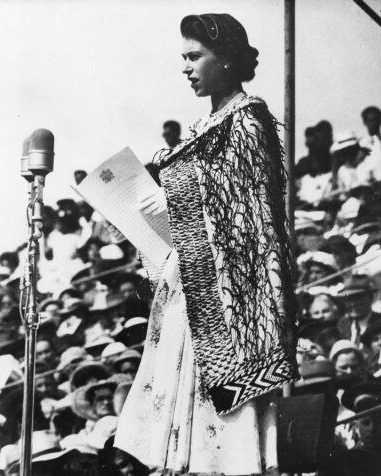
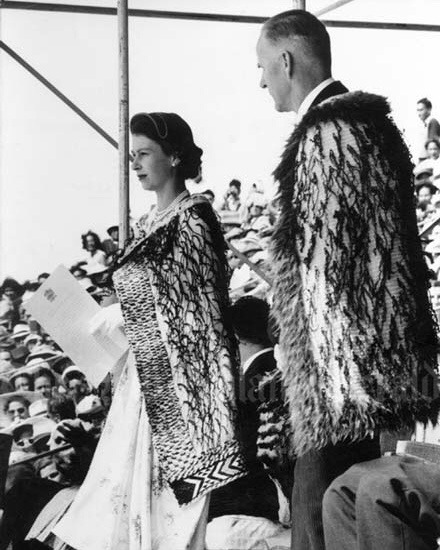
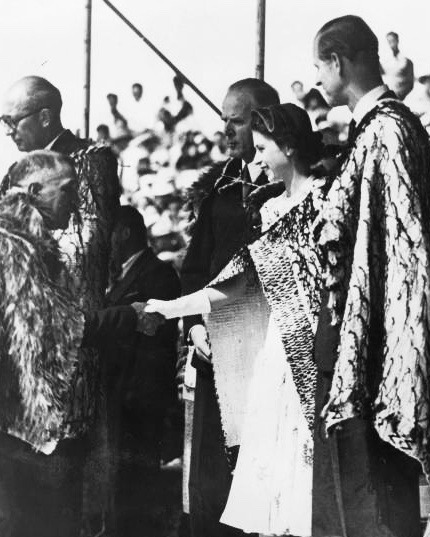
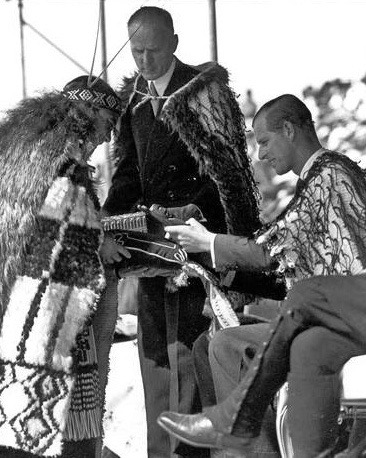
2 January 1954: The Queen and Prince Philip wore Māori cloaks called Korowai at a reception held at Arawa Park in Rotorua, New Zealand.
35 notes
·
View notes
Text

House post figure (Amo). (ca. 1800). Maori people, Te Arawa
10 notes
·
View notes
Note
Hi! I was looking to update an FC and replace Jason Momoa because I've heard some promblematic stuff 'bout him and 'cause of age requirements. Do you have any alts or suggestions for a male actor in his early 30s with beach-y vibe or smt like that, tall and more or less muscular and beefy? Preferably Hawaiian, although I'd apreciate if you include other actors of Pacific Islander or Indigenous ancestry.
Marcus LaVoi (1968) Ojibwe.
Joe Naufahu (1978) Tongan, Samoan, White - has spoken up for Palestine!
Mark Kanemura (1983) Samoan, Japanese, White - is gay.
Uli Latukefu (1983) Tongan.
Roman Reigns (1985) Samoan / White.
Martin Sensmeier (1985) Tlingit, Koyukon, Eyak, White.
Lasarus Ratuere (1985) Fijian, Torres Strait Islander, Unspecified Aboriginal Australian.
Keahu Kahuanui (1986) Kānaka Maoli, Japanese, White.
Kalani Queypo (1986) Blackfoot, Kānaka Maoli, White.
Mark Coles Smith (1987) Nyigina.
Alex Tarrant (1990) Niuean, Samoan, Ngāti Pāoa.
Daniel Vidot (1990) Samoan and Irish.
Marlon Teixeira (1991) Brazilian [Portuguese, Unspecified Indigenous, Japanese].
Clarence Ryan (1992) Unspecified Aboriginal Australian.
Beulah Koale (1992) Samoan.
Hunter Page-Lochard (1993) Nunukul, Yugambeh, Haitian, White.
Jordi Webber (1994) Ngāti Toa, Te Āti Awa, Ngāti Raukawa, White / Te Arawa, Ngāti Maniapoto, White.
I gave older suggestions for those looking too!
8 notes
·
View notes
Text
Counting non-general things in Ainu!
Check my post on general counting before reading:
Here are some number endings that are commonly used.
-nonno - flowers -ker - shoes -otciki - legs (of furniture) -ay - arrows -paskur - glassware -cep - fish -cise - houses -cip - boats
So, let's say we have four of each: we would have
inenonno - 4 flowers ineker - 4 shoes ineotciki - 4 furniture legs ineay - 4 arrows inepaskur - 4 pieces of glassware inecep - 4 fish inecise - 4 houses inecip - 4 boats
Okay! And if we alternatively have ten of each, we would have:
wannonno - 10 flowers wanker - 10 shoes wanotciki - 10 furniture legs wanay - 10 arrows wanpaskur - 10 pieces of glassware wancep - 10 fish wancise - 10 houses wancip - 10 boats
HOWEVER! The counter for people is irregular:
sinen - 1 tun - 2 ren - 3 inen - 4 asikne nin - 5 iwa nin - 6 arawa nin - 7 tupesan nin - 8 sinepesan nin - 9 wan nin - 10
So, to for example say "six people" you'd say "ainu iwa nin."

8 notes
·
View notes
Photo
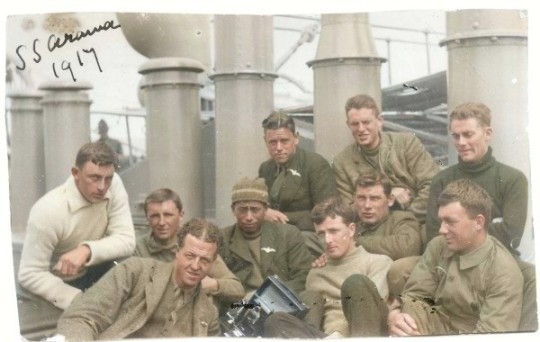
Group of Airmen on board S.S. Arawa, c. October 1917. The airmen were on their way from New Zealand to England to begin training with the Royal Flying Corps.
#royal flying corps#raf#ww1#anzac#Anzac Day#remembrance day#historical photos#history#british#world war 1#world war one#The first world war#wwi#1918#1917#1916#1915#1914
63 notes
·
View notes